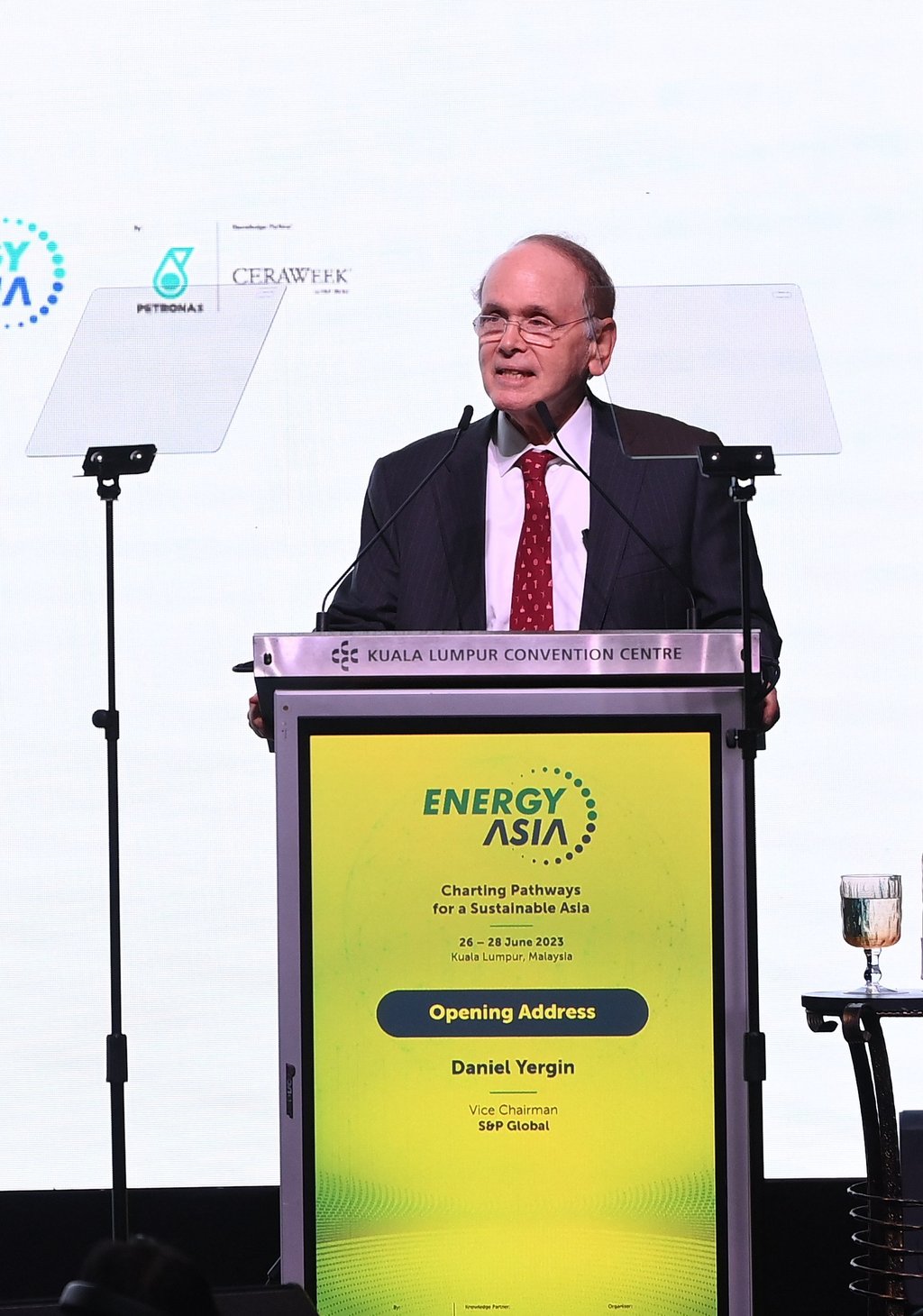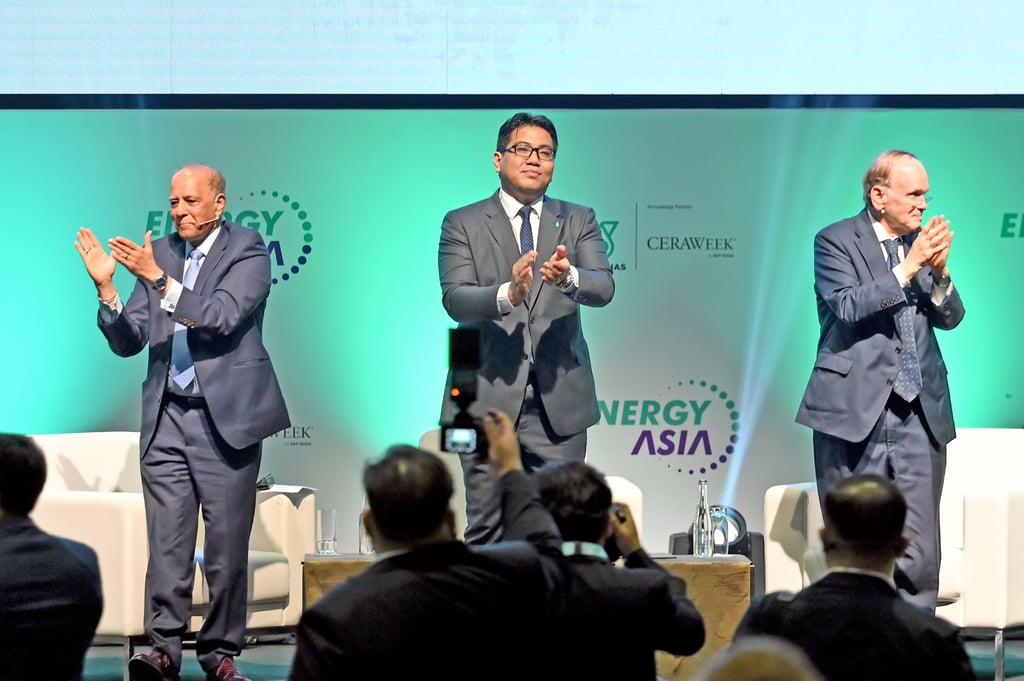Why Asia must pursue a just energy transition on its path towards a net-zero carbon future
- Asia’s move to clean energy is crucial to meeting global sustainability goals, but it must balance the needs of countries at different stages of development
- The inaugural Energy Asia conference gave business leaders and government officials a platform to explore solutions that are fair and beneficial to all

[Sponsored article]
Carbon emissions are continuing to rise at unprecedented levels worldwide, according to an assessment report released in March by the Intergovernmental Panel on Climate Change, which signals escalating risks to the environment and life on our planet.
About three-quarters of global greenhouse gas emissions are linked to the energy sector, the International Energy Agency (IEA) reports. To mitigate this, the IEA has developed the Net-Zero Emissions by 2050 Scenario, which lays out a path for the global energy sector to bring its carbon emissions to net zero over the next two-plus decades.
Asia, which accounts for 53 per cent of the world’s carbon emissions, will play a pivotal role in achieving this target, according to Tengku Muhammad Taufik, president and group CEO of Malaysian energy group Petronas. In his welcome address at the inaugural Energy Asia conference that took place in June, he said: “The world cannot achieve net zero without Asia achieving net zero.”

Energy Asia – hosted by Petronas with the aim of providing a platform for business leaders and government officials to explore and discuss solutions for the region’s shared net-zero goal – was attended by about 4,000 participants from 28 countries. The three-day conference in Kuala Lumpur, Malaysia, also featured more than 100 speakers and 46 sponsors representing 19 industries.
Dr Daniel Yergin, vice-chairman of S&P Global – a financial analytics company that organises the annual CERAWeek energy conference and serves as a knowledge partner for Energy Asia – also emphasised Asia’s significance in the push towards sustainability.
“The voice of Asia needs to be heard globally on the subjects of energy transition and climate policies,” he said in his opening remarks at Energy Asia. “It is the most economically dynamic part of the world, and the centre of gravity for the world’s growth in energy demand.”
Moving towards a just energy transition
If not handled properly, Asia’s transition to clean energy could have a devastating impact on people’s livelihoods, especially those in emerging economies. “The harsh reality is that even as we gather here [at the conference], 350 million [people] in Asia still face challenges in accessing affordable and reliable electricity,” Taufik, who is also the chairman of Energy Asia, said in his address at the event.
Nevertheless, the region remains committed to global climate goals. “The governments in Asia are not climate deniers,” Taufik added. He pointed out that all 10 Asean countries have submitted their Nationally Determined Contributions – self-defined emissions reduction plans that individual countries put forth to the United Nations – with most having pledged to pursue a net-zero target.
Taufik also noted of the Association of Southeast Asian Nations: “We have even set an Asean renewable energy target of 23 per cent in the energy mix by 2025.”

While net zero is the ultimate goal, getting there through a just energy transition is also important. That process calls for decision makers such as companies, governments and regulators to focus on protecting the needs of vulnerable markets and communities in order to ensure that the transition to clean energy will be beneficial for all.
“What is critical is that we recognise the energy aspirations of all stakeholders, and forge a pragmatic pathway where no one is left behind,” Taufik said.
Yergin echoed a similar point in his Energy Asia speech. “The recent years have once again brought energy security and affordability to the fore, and the need to assure secure and affordable energy even while also seeking reduction in emissions,” he said. “Without energy security, the energy transition will be much more challenging.”
Although the ideal net-zero scenario has been laid out by the IEA, there are still significant challenges in ticking both boxes of meeting sustainable development goals and enacting a just energy transition.
“Energy transition is a journey of change that cannot be achieved overnight,” Taufik said. “It is daunting, complex and not linear – and more must be done to bring all the solutions that we have available to us.”
Tailoring dynamic, diverse solutions
At the conference, Yergin provided some examples of potential solutions, but at the same time acknowledged there are challenges in adopting them. “Critical technologies for the energy transition – including solar, wind and the electric car – are now at scale, and increasingly greater scale,” he said. “The challenge of reducing the cost of infrastructure may become a binding constraint to their deployment.”
Yergin also urged that the adoption of low-carbon technologies be accelerated. “This can be done partly through public finance, and also incentives,” he said. “Certainly, regulation will be important, but I think what’s really critical is innovation – making the technologies more efficient and able to deliver. Then you need the buy-in of the people who see this as important and want to help make it happen.”

Decarbonisation demands a multipronged and diverse approach. “Given the unique conditions faced by distinct emerging economies across Asia, achieving a just and responsible energy transition requires a carefully planned transformation tailored to the distinguishing characteristics of each country’s position,” Taufik said. “A one-size-fits-all approach is not feasible to ensure an optimal balance of energy, equity, security and sustainability.”
He added: “This can only be achieved through rapid synergistic partnerships from all stakeholders. The role of policies, financing, innovation and digital transformation are all critical in accelerating towards an inclusive, prosperous and sustainable Asia.”
Building such partnerships relies on open lines of communication, which events such as Energy Asia can facilitate. Yergin said: “[My] hope is that Energy Asia will be established as the primary forum in Asia for understanding the pathways to a sustainable future.”
Taufik added: “Energy Asia came at a critical time for Asia’s energy future. I am hopeful that with our common ambition for a lower-emissions future, we will rally to forge deeper and more meaningful collaborations – nothing less than an all-in effort from all stakeholders to steer us in the right direction.”